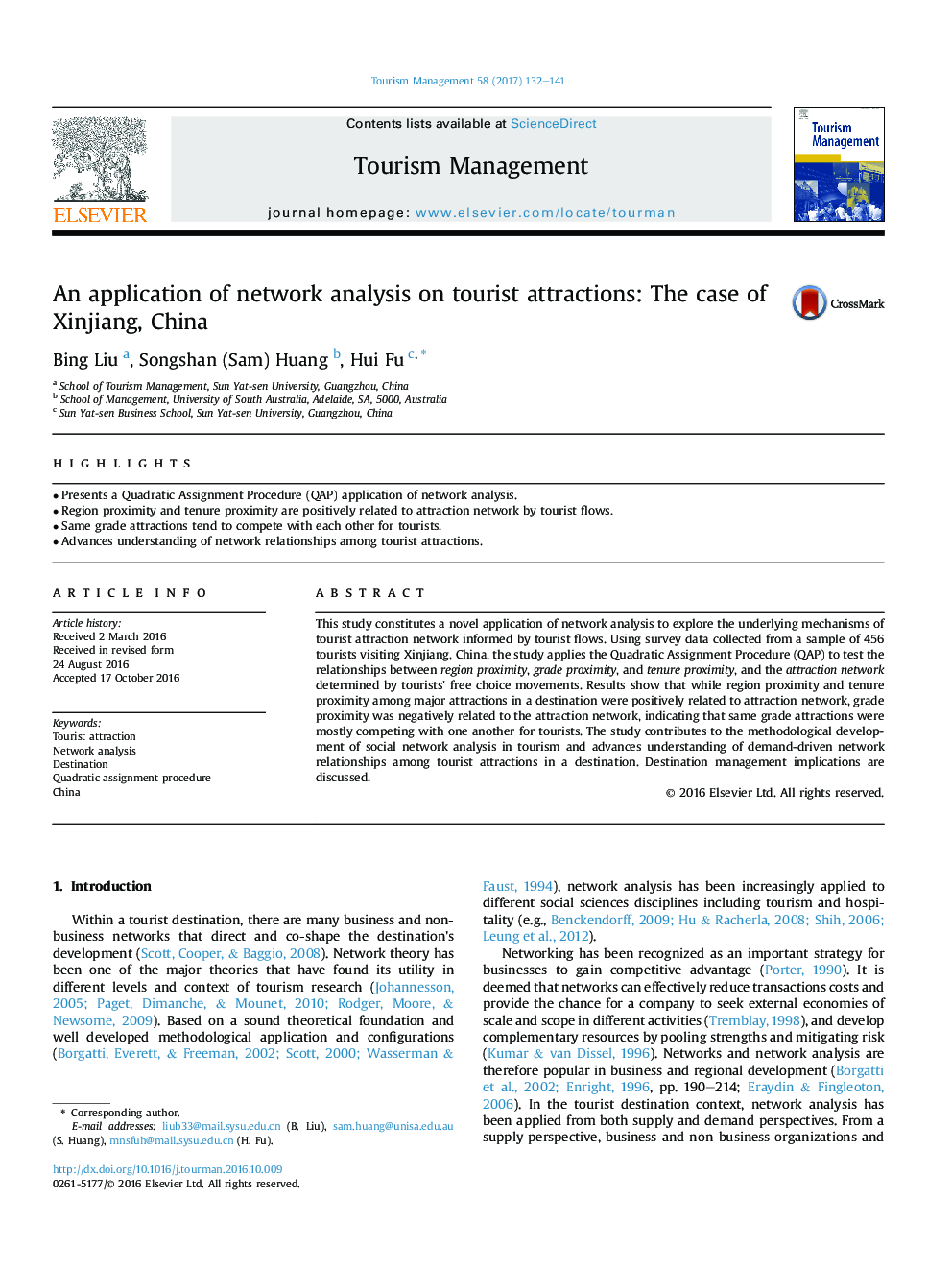| Article ID | Journal | Published Year | Pages | File Type |
|---|---|---|---|---|
| 5108716 | Tourism Management | 2017 | 10 Pages |
Abstract
This study constitutes a novel application of network analysis to explore the underlying mechanisms of tourist attraction network informed by tourist flows. Using survey data collected from a sample of 456 tourists visiting Xinjiang, China, the study applies the Quadratic Assignment Procedure (QAP) to test the relationships between region proximity, grade proximity, and tenure proximity, and the attraction network determined by tourists'Â free choice movements. Results show that while region proximity and tenure proximity among major attractions in a destination were positively related to attraction network, grade proximity was negatively related to the attraction network, indicating that same grade attractions were mostly competing with one another for tourists. The study contributes to the methodological development of social network analysis in tourism and advances understanding of demand-driven network relationships among tourist attractions in a destination. Destination management implications are discussed.
Related Topics
Social Sciences and Humanities
Business, Management and Accounting
Strategy and Management
Authors
Bing Liu, Songshan (Sam) Huang, Hui Fu,
